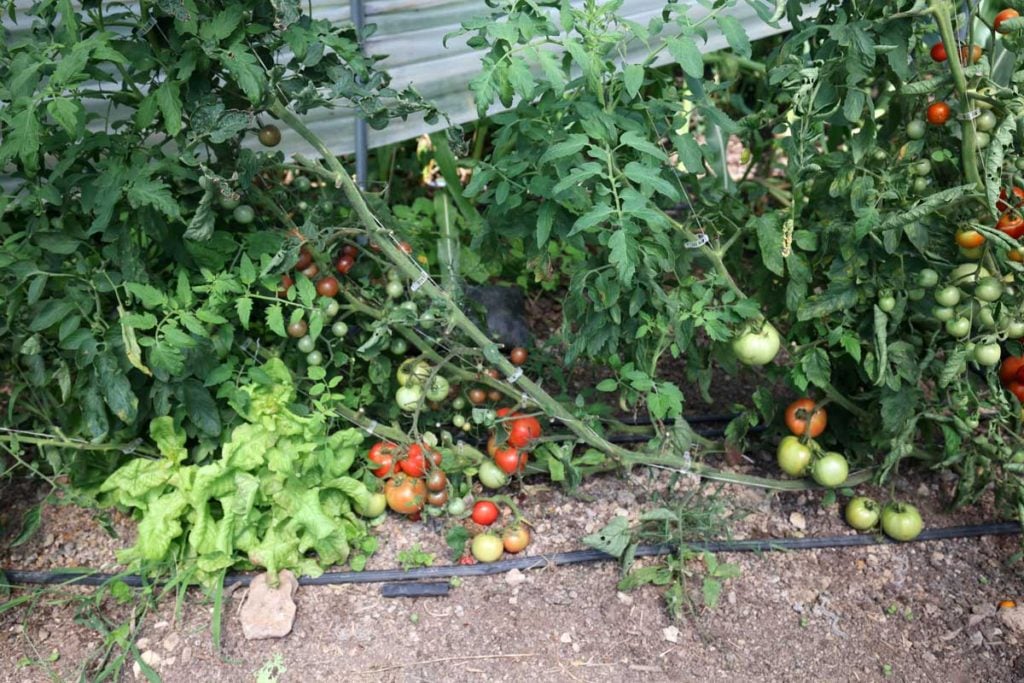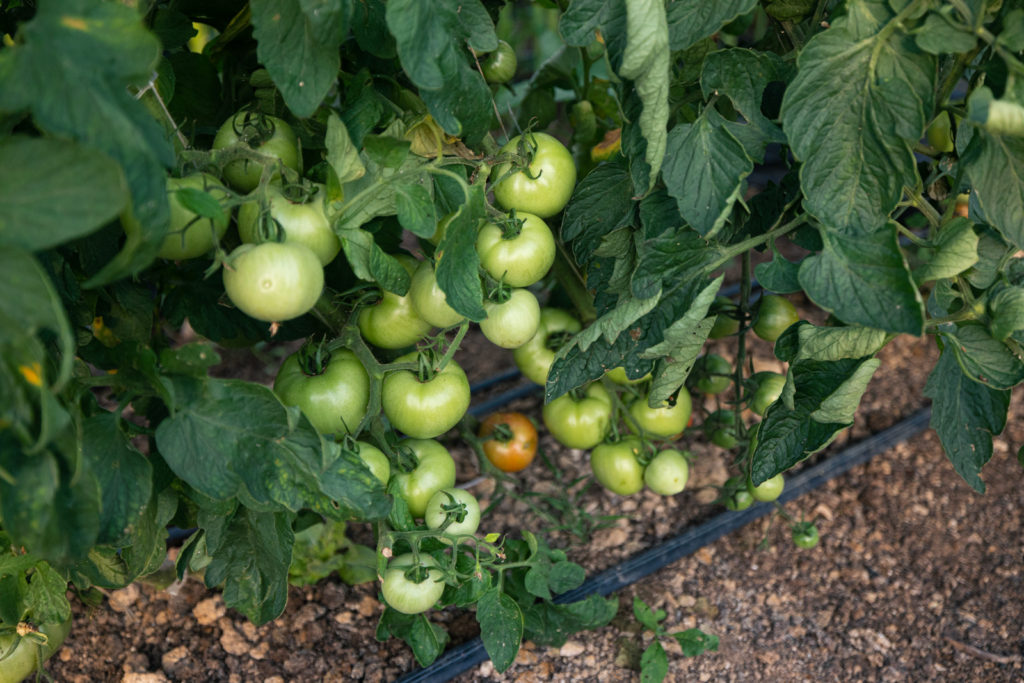Is a Greenhouse Worth the Cost?
The dream of almost every gardener is to have a greenhouse. They are almost idealized in the world of growing but the real question is a greenhouse worth the cost?

What is a Greenhouse?
First, let’s define the word greenhouse. Merriam Webster has it defined as: a usually permanent climate-controlled structure enclosed (as by glass or multiple layers of plastic) and used usually year-round for the cultivation or protection of tender plants
This post contains affiliate links. Here is the full disclosure.
Aside from the definition, in the farming and gardening world, a true greenhouse is a climate controlled, sunny space. So 90% of what is being marketed and sold is not actually a greenhouse unless you are planning on heating and cooling it- keeping it climate controlled.
Many assume that if a company is selling a greenhouse, that greenhouse is going to have magical powers to keep vegetables from freezing in the winter. Unfortunately, this is not the case. 🙂

Even so, an unheated greenhouse can act as a buffer from the cold, even if it won’t magically allow you to grow tomatoes in the middle of winter.
Unheated greenhouses or tunnels are better suited towards growing cool season crops when the weather is cold and warm season crops when the weather is warm. A novel idea, right? Eliot Coleman talks about this more in depth in his book, The Winter Harvest Handbook, found HERE.
Other Common Names for Unheated Greenhouses:
Many names are all used interchangeably with the term greenhouse, however, they aren’t all the same thing.
These names are: Hoop house, high tunnel, caterpillar tunnel, hot house, cold house, and nursery.
Any of these can easily become a greenhouse by adding a propane or gas heater, or using alternative options like thermal mass, geothermal, wood stove, or solar to heat the greenhouse.
Advantages of a Greenhouse, High Tunnel, or Hoop House
- It extends the growing season and accelerates plant growth
- Can house chickens or other animals in winter, keeping the area warm and increasing egg production, and creating fertility in the greenhouse from manure.
- Acts as a windbreak for plants
- Seed starting area
- Gives the ability to control conditions
- Used to mitigate excessive sunlight, via the plastic and shade cloth
- Protects from extreme weather events
- Can protect from soil borne diseases
- Has ability to keep out large animals like deer
Disadvantages of a Greenhouse, High Tunnel, or Hoop House
- May have increased insect pests and diseases
- Rodents love covered spaces and can cause damage to plants
- Can create an excess of soil nutrients
As you can see, the advantages of having a greenhouse far outweigh the disadvantages. These advantages allow for healthier, more productive plants than those grown without a protective cover.
As I’ve become more immersed in gardening, I’ve taken a lot of notes from market gardeners. They really know how to do things economically and efficiently because they are running a business. If you look at a market garden, they often have many protected growing spaces or tunnels.
This is because of all the advantages mentioned above. They wouldn’t set them up unless it was increasing the quality and quantity of food. A greenhouse or tunnel can do the same thing for a home gardener as well. But, it needs to be done in wisdom, I explain this in more detail below.
Is a Greenhouse Worth the Cost?
First, let’s consider the initial cost of the structure. Prices vary widely depending on the type of greenhouse.
A utilitarian greenhouse, high tunnel, or hoop house is about $2.50-$10 per square foot. My caterpillar tunnel was bought HERE and at the time, was $2 per square foot. Prices have since gone up a little (thank you inflation) but even still it is a very affordable way to extend the season. Beyond that, it requires only basic DIY skills and the help of a friend or family member to assemble.

On the other hand, premade greenhouses and even kits made from materials including wood that are marketed to hobby gardeners are anywhere from $30-$70 a square foot.
I will also add that many smaller greenhouses have a floor making it completely unusable for in-ground gardening and more of a seed starting area and potting shed.
Cost Breakdowns of a Greenhouse and Hypothetical Examples
Example 1- Small Greenhouse Marketed to Hobby Gardeners
Let’s take an assembled wood framed 12×12 greenhouse with a floor as an example. The starting price right now is $7100, using this SOURCE. Thats $50 a square foot. 144 square feet total.
If you were using it as a potting shed, to start seedlings, let’s say on average you usually spend $300 at the store on seedlings. So your cost is $50 on supplies and you save $250 each year by growing your own seed starts.
It would take 28 YEARS to pay off this particular greenhouse. Can you believe it? I never did the math before now but that is crazy.
Looking at the numbers alone, it is not worth it to buy a small greenhouse that looks nice.
Example 2 – Mid Size to Large Greenhouse
Now as for the economical greenhouse, hoop house, or high tunnel that farmers often have (there is a reason for this), it runs at about $2.50- $10 a square foot.
If you were to buy a smaller size, 14×25 feet, that’s 350 square feet of growing area. Cost for the this option is $1200 but requires some assembly and in-ground growing can be done. You can plant 4-6 weeks earlier in an unheated tunnel or greenhouse due to the protected space.
Here’s a hypothetical example:
Early spring planting 2 months before average last frost- these plants are grown:
- 40 lettuce heads at current price of $3* per head = $120
- 12 organic broccoli heads at $4 each = $48
- 24 organic cabbages at $4.15 each = $99.60
- 24 organic kale plants at $3 a bunch = $72
- 60 carrots, about 12lbs at $2 for 2lbs = $12
- 12 row feet spinach (about 2.5 lbs) at $5 a pound= $12.50
- $300 worth of homegrown nursery plants started in trays in greenhouse
*All prices are based on current market prices of vegetables at a large chain grocery store. Nutrient dense food grown at your farm or garden is worth more, but I’m rounding way down for this example.
So after totaling everything up, in just a few months you can either sell about $670 in plants or save $670 on groceries and plants bought from nurseries. In 2 months! After taking off $100 in seeds, potting mix, and compost costs, you still are saving $570.

Without a greenhouse, planting begins much later nearer to the average last frost.
Now moving into Summer the same thing happens, the ability to grow earlier and for longer with heat loving crops like tomatoes and peppers.
Speaking from experience my outdoor grown tomatoes have stopped producing (2023), and my tunnel protected space tomatoes are still growing strong. We harvested earlier and are picking later, increasing what we can produce.
It’s harder to put number values to summer crops, but I’m certain based on my personal experience that between Spring, Summer, and Fall planting, an unheated tunnel or hoop house would pay itself off in savings or earning from selling produce in a year.
That’s when you know it’s a worthwhile investment.
To reiterate this, with a simple unheated high tunnel or hoop house, it would take around one year to pay off, and every year thereafter would be profit or savings. So in that case, it is DEFINITELY worth it.
My Opinion
I don’t understand why so many gardeners are infatuated with the tiny greenhouses in example 1. When I started out gardening, I was infatuated with the pretty but impractical greenhouse too.
I think a lot of that was due to the fact that the more economical greenhouses were mostly marketed to farmers and much larger in size. Thankfully nowadays smaller sizes of this type are available and they are an incredible value.

The average size backyard is around a quarter acre or .25 and this greenhouse (tunnel type) takes up 0.0088 acres. Most people could easy fit it, as long as city rules allow this type of structure.
I highly recommend buying this type of greenhouse, and buy mine HERE. End walls are sold separately and you can choose which kind you’d prefer.
{Full disclosure: I’m an affiliate but I was buying from this company years before we started to work together. They sell the best tunnels for the best price. I highly recommend them and if you do ever purchase one, it would mean a lot if you buy through the link above, it helps support the blog, and adds no additional cost to you.}
Is heating and cooling a greenhouse worth the cost?
Ok this one is tricky because I have less experience here. I don’t heat any of my tunnels and make them into greenhouses.
From what I’ve read, it’s the farmers who are minimally heating that say it is worth the cost. Eliot Coleman heats his greenhouse only when temperatures drop below 32ºF to keep seedlings alive.

When you are working strongly against nature, like trying to grow tomatoes in the dead of winter and keeping it heated for that, I would assume the cost would outweigh what you could sell a tomato for.
I can’t speak more on this, because I feel it’s important to share from experience in addition to research, not just research alone.
A good source for additional information on this can be found HERE and a calculator for cost estimations can be found HERE.
Conclusion:
Is a Greenhouse Worth the Cost? The answer varies based on what type of greenhouse, along with heating requirements.
Greenhouses vary widely in pricing from $2 a square foot to $70 a square foot. Surprisingly a more expensive $70 square foot greenhouse often sells with only the ability to function as a potting shed for seed starting and growing a few things in pots.
Therefore, due to the time it would take to recoup the cost, the expensive, pretty greenhouses are not worth the money.
With a farm type greenhouse, like a caterpillar or unheated high tunnel, the investment can be paid off within a year or two. This type of greenhouse is worth the money.

